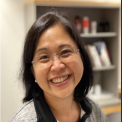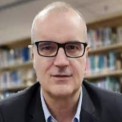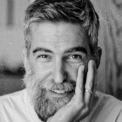RNA molecules play vital roles in cellular functions, not only as facilitators of the transcription of the genetic code carried by DNA but also as non-coding molecules that promote post-transcriptional regulation of gene expression, among other functions. It is necessary to develop biophysical methods that allow visualization of the structural dynamics of non-coding RNA molecules as part of large processing complexes involving protein partners. Here, we describe how to utilize small angle x-ray scattering (SAXS) with absolute calibration and contrast variation (CV-SAXS) to detect conformational changes of a primary microRNA upon binding with a part of the microprocessor complex. This method reports only on the RNA conformation within the complex and suggests that the protein bends the RNA. Supporting work using single molecule Fluorescence Energy Resonance Transfer (FRET) to study the conformation of RNA duplexes bound to the protein also shows bending. Together, these studies elucidate the role of the protein DGCR8 in interacting with RNA during the early stages of microRNA processing. This talk will also give a broad introduction into CV-SAXS and its different applications in the study of structural dynamics of protein-nucleic acid complexes.
Events Calendar View
-
Departmental Colloquium
Mar 31, 2022
Visualizing bending of RNA structures by a bound protein using Contrast Variation Small-Angle X-ray Scattering (CV-SAXS)
-
Special Colloquium
Apr 7, 2022
2022 Chhabra-Landau Lecture: Meeting Dirac’s Challenge: Quantum Many-body Physics in the 21st Century
In 1929 Paul Adrian Maurice Dirac wrote, with complete theoretical justification, “The underlying physical laws necessary for the mathematical theory of a large part of physics and the whole of chemistry are thus completely known” and he continued , “... the difficulty is only that the exact application of these laws leads to equations much too complicated to be soluble. It therefore becomes desirable that approximate practical methods of applying quantum mechanics should be developed, which can lead to an explanation of the main features of complex atomic systems without too much computation.’’ This talk will present recent spectacular progress towards meeting Dirac’s challenge. The key insight, important on multiple levels, is that the quantum many-body problem is in essence a big data problem, with the solutions all revolving around appropriate compression of information. Crucial to the practical solution is a multimessenger approach demanding consistency between different methods. Specific examples and important open questions and challenges will be discussed.
Learn more about our speaker and the Chhabra-Landau Lecture Series in this news post:
The 2022 Chhabra-Landau Lecture, April 7, 3:55 PM -
CSP Lunch Seminar
Apr 12, 2022
First principles investigations of Fe-based dopant defect complexes in KNbO3
-
Departmental Colloquium
Apr 14, 2022
Unipolar quantum optolectronics
Highly sensitive and ultrafast optoelectronic systems operating in the atmospheric thermal window (8–14μm) are required for free-space communications, light detection and ranging (Lidar) and for high resolution spectroscopy and in observational astronomy.
Unipolar quantum optoelectronics is a field of research of quantum physics that encompass an ensemble of semi-conductor devices aiming to develop enabling systems for applications in the atmospheric thermal window (8–14μm). The new generation of these devices is embedded into metamaterials for increasing their performances. They operate at room temperature with bandwidths of tens of GHz, ideal for free-space communications, light detection and ranging (Lidar), high resolution spectroscopy and observational astronomy.
-
CSP Lunch Seminar
Apr 19, 2022
New CSP IT capability
-
Special Colloquium
Apr 28, 2022
Space Telescopes for Exoplanet Science
I will introduce two new space telescopes concepts that can observe exoplanet systems across ultraviolet wavelengths. The first is SPARCS (Star-Planet Activity Research CubeSat), hopefully launching next year, and the second is UV-SCOPE (Ultraviolet Spectroscopic Characterization of Planets and their Environments) which is currently under review within NASA’s Medium-class Explorer program. Both SPARCS and UV-SCOPE are driven by the need to better understand the current and past UV exposure experienced by exoplanets and how this exposure influences the demographics and habitability of small exoplanets. Both missions will also improve our understanding of the UV history of M and K stars (the most likely hosts of potentially habitable worlds) as well as improve our understanding of two important exoplanet atmospheric phenomena --- cloud formation and atmospheric escape.
Page 116 of 121, showing 6 records out of 723 total, starting on record 691, ending on 696





